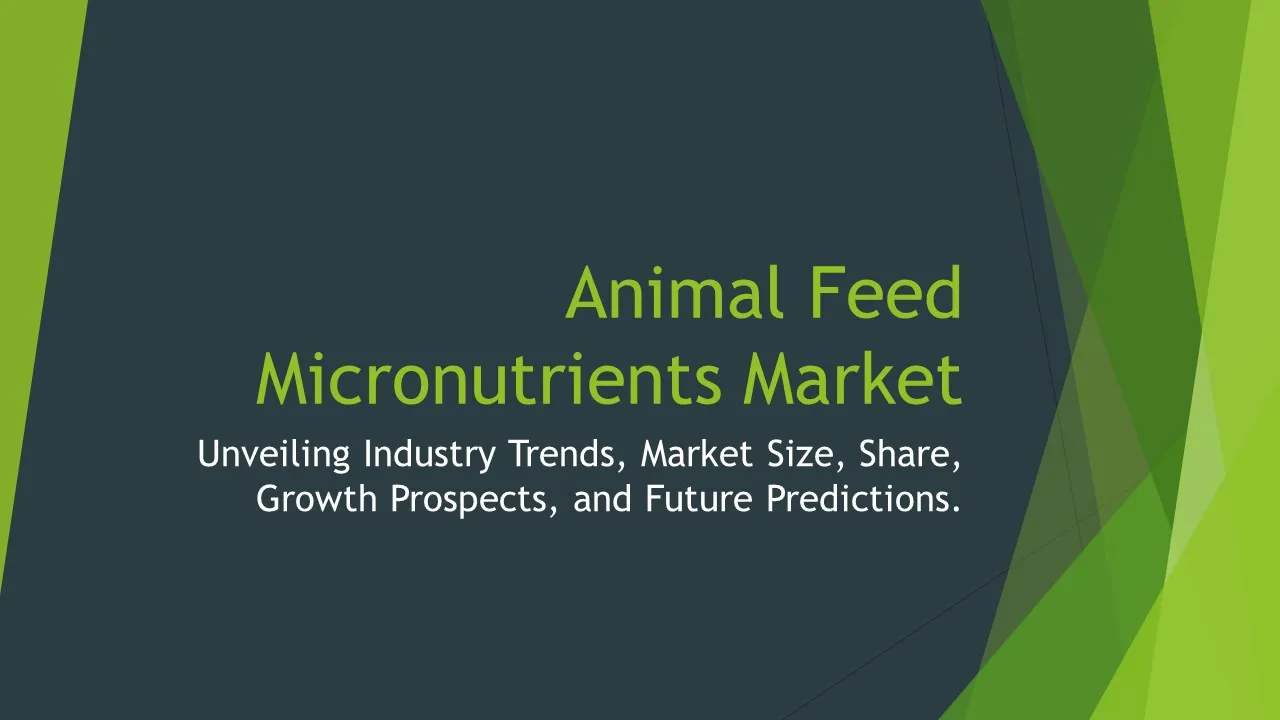Insect Feed Sales
Insect Feed Market Segments - by Product Type (Mealworms, Crickets, Black Soldier Fly Larvae, Grasshoppers, Ants), Application (Animal Feed, Pet Food, Aquafeed, Fertilizers, and Others), Distribution Channel (Online Stores, Pet Stores, Feed Mills, Supermarkets/Hypermarkets, and Others), Ingredient Type (Chitin, Protein, Fats & Oils, Fiber, and Others), and Region (Asia Pacific, North America, Latin America, Europe, and Middle East & Africa) - Global Industry Analysis, Growth, Share, Size, Trends, and Forecast 2025-2035
- Report Preview
- Table Of Content
- Segments
- Methodology
Insect Feed Sales Market Outlook
The global insect feed market size is anticipated to reach USD 1.5 billion by 2035, growing at a compound annual growth rate (CAGR) of approximately 10.5% from 2025 to 2035. This growth is significantly driven by the rising demand for sustainable protein sources and the increasing awareness regarding the environmental impacts of conventional livestock farming. The ability of insect feed to provide high-quality protein while utilizing organic waste has garnered attention from industries ranging from animal husbandry to aquaculture. Additionally, the shift towards more natural and nutritious diets for pets and livestock is further propelling the market. Consequently, innovations in insect farming technologies and the scaling up of production capabilities are expected to play a crucial role in market expansion.
Growth Factor of the Market
Several factors contribute to the robust growth of the insect feed market. To begin with, the global push for sustainability has led to a significant increase in the interest and investment in insect farming. Insects are known to convert feed into protein more efficiently than traditional livestock, requiring much less land, water, and feed. Furthermore, the regulatory framework is increasingly becoming favorable towards the utilization of insect protein in animal feed, especially in Europe and North America. The shifting consumer preferences towards organic and non-GMO feeds bolster the market as stakeholders seek alternative protein sources with minimal ecological footprints. The rising aquaculture industry is also a notable contributor since fishmeal derived from fish stocks is becoming scarce, prompting aquafarmers to seek alternative protein options. Overall, these growth factors create a conducive environment for the insect feed market to thrive.
Key Highlights of the Market
- Rapidly growing demand for sustainable protein sources in animal feed and aquaculture.
- Increased investment in insect farming technologies to scale production capacities.
- Favorable regulatory frameworks supporting the use of insect protein in various applications.
- Growing consumer preferences for organic and high-quality animal feed products.
- Expansion of the aquaculture industry driving the need for alternative protein sources.
By Product Type
Mealworms:
Mealworms are one of the most widely used insect types in the feed market. They possess a high protein content, comprising about 50-60% of their dry weight, making them an excellent source of nutrition for various livestock and pets. Additionally, they are rich in essential amino acids, vitamins, and minerals, which enhance the overall health of the animals consuming them. Mealworms can be cultivated on organic waste products, making them a sustainable choice for animal feed. Their versatility allows them to be incorporated into different forms of feed, from pellets to protein powders, catering to both the aquaculture and livestock sectors. The escalating demand for protein-rich diets in animal husbandry is propelling the growth of mealworm-based feed products.
Crickets:
Crickets are gaining popularity in the insect feed market due to their high protein content and favorable nutrient profile, which includes healthy fats and essential vitamins. They are particularly sought after in the pet food segment, where they are used in formulations for reptiles and birds, as well as for premium dog and cat foods. Crickets are also a sustainable option as they can be reared on organic waste, and they have a low environmental impact compared to traditional livestock. The rise in the pet ownership trend, coupled with the demand for natural and healthy pet food options, is considerably boosting the cricket feed segment. Their potential to be processed into flour or meal further enhances their applicability across various feed formulations.
Black Soldier Fly Larvae:
Black soldier fly larvae (BSFL) are emerging as a leading player in the insect feed market due to their exceptional ability to convert organic waste into high-quality protein. They contain around 40-45% protein and are rich in healthy fats, making them ideal for animal feed, particularly in aquaculture. BSFL can thrive on a variety of organic materials, including food waste, which aligns with sustainability goals in feed production. As a result, they are increasingly being adopted in animal feed formulations, helping to address the growing concerns over feed sustainability. Their incorporation in aquafeed and livestock feed not only enhances the nutritional value but also contributes to waste reduction, positioning BSFL as a critical component of the insect feed market.
Grasshoppers:
Grasshoppers are another notable type within the insect feed market, recognized for their high protein content and nutrient density. They are often used in feed formulations for poultry and aquaculture, and their flavor profile appeals to certain species of fish and birds. Grasshoppers contain approximately 60-70% protein and are a good source of essential fatty acids. The rising demand for sustainable feed options among farmers is leading to increased interest in grasshopper farming, particularly in regions where they are abundant. Moreover, grasshoppers can be reared with minimal environmental impact and can serve as an alternative protein source that contributes to biodiversity in feed formulations.
Ants:
Ants are less commonly used in commercial insect feed but are gaining traction due to their unique nutritional profile and potential health benefits. Some species of ants are rich in protein and contain various bioactive compounds that may provide added health benefits to the animals consuming them. This segment is still in its nascent stages but shows promise due to the rising interest in diversifying protein sources in animal nutrition. Ants are particularly appealing in niche markets, such as the pet food industry, where exotic proteins are gaining popularity. As research continues to unveil the benefits of ants in animal feed, this segment may see increased commercial interest and utilization.
By Application
Animal Feed:
The application of insect feed in animal husbandry represents a major segment within the market. Livestock farmers are increasingly turning to insect-based proteins as a sustainable alternative to traditional feed components like soy and fishmeal. Insects, such as mealworms and BSFL, offer a balanced amino acid profile and essential nutrients that are beneficial for livestock health and growth. Furthermore, the ability of insects to convert organic waste into feed significantly reduces the environmental impact associated with conventional feed production. The demand for insect protein in livestock feed is expected to grow as farmers look for cost-effective, sustainable solutions to meet their livestock's nutritional needs while minimizing ecological footprints.
Pet Food:
The pet food segment is experiencing significant growth as pet owners are becoming more conscious of the nutritional quality of the food they provide. Insect protein, particularly from crickets and mealworms, is gaining popularity due to its high digestibility and nutritional value. This shift towards natural and high-quality ingredients is driving pet food manufacturers to explore insect-based formulations. The rising trend of premium and specialized pet diets is further fueling the demand for insect protein, as it aligns with the desires of pet owners to provide their pets with healthy and environmentally friendly food options. As research highlights the health benefits of insect-based diets for pets, this segment is poised for continued expansion.
Aquafeed:
Aquaculture is one of the most promising applications for insect feed, driven by the need for sustainable protein sources in fish farming. The use of insect meal, particularly from BSFL and crickets, in aquafeed formulations is gaining traction as fisheries aim to reduce reliance on overexploited fish stocks. Insects provide a rich source of protein, fats, and essential nutrients that enhance the growth and health of aquatic species. Moreover, the low ecological footprint of insect farming aligns with the sustainability goals of the aquaculture industry, making insect feed an attractive alternative to traditional fishmeal. As the demand for seafood continues to rise globally, the aquafeed segment is expected to witness substantial growth.
Fertilizers:
Insect feed is not only limited to animal nutrition but is also finding applications in the fertilizer sector. The by-products of insect farming, such as frass (insect manure), are rich in nutrients and can serve as organic fertilizers. Frass is known to improve soil health and enhance plant growth due to its high nutrient content, making it a valuable resource for sustainable agriculture. The growing trend towards organic farming and eco-friendly fertilizers is boosting the demand for insect-derived fertilizers. As farmers seek natural alternatives to chemical inputs, the insect feed market is likely to see an increase in the utilization of insect by-products for fertilization purposes.
By Distribution Channel
Online Stores:
Online distribution channels have become increasingly important in the insect feed market, primarily due to the convenience and access they offer to consumers. E-commerce platforms allow for a wider reach, enabling pet owners, livestock farmers, and aquaculture operators to source insect feed products with ease. The growing trend of online shopping, coupled with the rising interest in specialty and high-quality feeds, has led many manufacturers to establish a strong online presence. This shift not only provides customers with the option to compare products and prices but also allows them to access a diverse range of insect feed options, catering to specific dietary needs and preferences.
Pet Stores:
Pet stores are crucial distribution channels for insect feed, especially for products aimed at pet food. As more pet owners seek to provide their pets with nutritious and sustainable food options, specialty pet stores have begun to stock insect-based feeds such as cricket and mealworm treats. This retail channel plays a significant role in educating pet owners about the benefits of insect protein and its role in a balanced diet. With the rise of premium pet food products, pet stores are likely to continue expanding their offerings of insect feed, ensuring that consumers have access to high-quality and innovative nutritional solutions for their pets.
Feed Mills:
Feed mills are essential players in the insect feed distribution network, as they are responsible for processing and formulating various animal feeds. They often incorporate insect proteins into their product lines to meet the growing demand for sustainable and nutritious feed alternatives. As more feed mills invest in sustainable sourcing and production practices, insect feed is becoming a more prominent ingredient in their formulations. This shift presents an opportunity for insect feed producers to collaborate with feed mills, ensuring that insect protein becomes a standard inclusion in conventional feed products for livestock and aquaculture.
Supermarkets/Hypermarkets:
The presence of insect feed products in supermarkets and hypermarkets is gradually increasing as consumer awareness of the benefits of insect protein grows. These retail outlets provide an accessible platform for consumers to explore insect-based feed options for both pets and livestock. Supermarkets often focus on offering organic and natural product lines, making them an ideal channel for insect feed products that align with the growing interest in sustainability. The expansion of insect feed into mainstream retailing can significantly drive consumer acceptance and utilization, as these outlets provide consumers with the convenience of purchasing insect feed alongside traditional products.
Others:
Other distribution channels, including specialty shops and agricultural supply stores, are also contributing to the growth of the insect feed market. These channels cater to niche markets, providing insect feed products tailored to specific animal types or dietary needs. As the insect feed market continues to expand, these specialized retailers play a vital role in educating consumers and promoting the benefits of insect protein. Additionally, alternative distribution methods, such as subscription services that deliver insect feed directly to customers' doors, are emerging as innovative ways to reach consumers, further diversifying the market landscape.
By Ingredient Type
Chitin:
Chitin, a natural polymer found in the exoskeletons of insects, is gaining recognition as a valuable ingredient in the insect feed market. It offers numerous benefits, including potential health advantages for livestock and pets, such as improved gut health and enhanced immune response. The incorporation of chitin in animal feed formulations can also help in disease prevention, contributing to overall animal well-being. As the demand for functional ingredients in animal nutrition rises, chitin is likely to gain traction, offering a unique and beneficial addition to various feed products.
Protein:
Protein is the most critical component of insect feed, as it provides essential amino acids necessary for the growth and development of animals. Insect protein, derived from sources such as mealworms, crickets, and BSFL, is highly digestible and offers a balanced amino acid profile that supports optimal health in livestock and pets. The increasing demand for high-protein diets in animal husbandry and aquaculture is driving the incorporation of insect protein into feed formulations. As consumers become more aware of the benefits of alternative protein sources, insect protein is expected to play a more prominent role in the animal nutrition landscape.
Fats & Oils:
The fats and oils derived from insects are gaining attention for their nutritional value and potential health benefits. Insect fats are rich in essential fatty acids, which are crucial for maintaining animal health and supporting growth. The inclusion of insect-derived fats and oils in animal feed formulations can enhance palatability and improve the overall nutritional profile of the feed. As the demand for high-quality, nutrient-rich feed options increases, the use of insect fats and oils is likely to become more prevalent in both livestock and pet food applications.
Fiber:
Fiber is another essential ingredient type in the insect feed market, contributing to digestive health and nutrient absorption in animals. Insects provide a source of dietary fiber that can support gut health, promote regularity, and enhance the overall well-being of livestock and pets. The growing recognition of the importance of fiber in animal nutrition is driving the incorporation of insect-derived fiber into feed formulations. As consumers increasingly seek natural and holistic approaches to animal care, the demand for high-fiber insect feed options is expected to rise, further diversifying the market.
Others:
Other ingredient types in the insect feed market may include vitamins, minerals, and bioactive compounds derived from insects. These ingredients can provide additional health benefits to animals, enhancing their overall nutrition and supporting growth. As research continues to uncover the potential health advantages of incorporating various insect-derived ingredients into animal feed, the market is likely to see increased innovation and diversification in product offerings, catering to the evolving needs of livestock and pet owners.
By Region
The insect feed market is witnessing varied growth across different regions, driven by local consumer preferences, regulatory landscapes, and farming practices. In North America, the market is projected to grow at a CAGR of 12% between 2025 and 2035, bolstered by increasing consumer awareness of sustainable protein sources and the adoption of insect protein in both livestock and pet food. The region's well-established aquaculture industry is also contributing significantly to the demand for insect feed. Meanwhile, in Europe, the market is rapidly expanding as regulations become more favorable towards the use of insects in animal feed, supporting a growing interest in sustainable agricultural practices.
In the Asia Pacific region, the insect feed market is poised for substantial growth, largely driven by rising populations and increasing demand for protein-rich diets. Countries such as China and India are expected to lead the market due to their large livestock sectors and growing aquaculture industries. The Latin America region is also beginning to explore the potential of insect feed, focusing on sustainability and cost-effective feed alternatives. The Middle East and Africa markets, while currently smaller, show promise as awareness of the benefits of insect protein rises, and local farming practices gradually adapt to include insect-based feed options.
Opportunities
The insect feed market is replete with opportunities, particularly in the context of sustainability and environmental conservation. As global awareness of the ecological impact of traditional livestock farming continues to grow, there is an increasing demand for alternative protein sources that require fewer resources and have a lower carbon footprint. Insect feed presents a unique solution, as insects can be bred on organic waste, effectively converting unused food materials into high-quality protein. This not only addresses waste management issues but also contributes to a circular economy within the agricultural sector. Companies engaged in insect farming and feed production can capitalize on these trends by developing innovative products that align with sustainability goals, potentially leading to partnerships with environmentally conscious brands and increasing market share.
Moreover, the rising trend of premium and specialized pet food products opens new avenues for the insect feed market. As pet owners become more discerning about the quality of ingredients in their pets' diets, the demand for natural, high-protein options is growing. This presents an opportunity for manufacturers to create insect-based formulations tailored specifically for pets, emphasizing the health benefits of insect protein. Additionally, as research continues to validate the nutritional advantages of insect feed, opportunities arise for collaborations with research institutions and universities to improve product formulations and expand the scientific understanding of insect nutrition in animal diets.
Threats
Despite the promising growth trajectory, the insect feed market faces certain threats that could hinder its expansion. One significant concern is the regulatory landscape surrounding the use of insects in animal feed, which may vary across different countries and regions. Stricter regulations or slow approval processes can impede market entry for new products and deter investments in insect farming. Additionally, public perception plays a crucial role in the acceptance of insect-based feeds. While the awareness of sustainability is growing, there still exists skepticism among consumers regarding the use of insects in food products, which could limit market penetration. Addressing these perceptions through education and transparent communication about the benefits of insect feed is essential for mitigating this threat.
A potential restraining factor is the competition from alternative protein sources, such as plant-based proteins and lab-grown meats. As these alternatives gain traction, they could divert attention and investment away from insect feed solutions. Furthermore, the scalability of insect farming can present challenges, as significant investment in infrastructure and technology is needed to meet rising demand. Ensuring the economic viability of insect farming operations is crucial for sustaining growth in the insect feed market, making it essential for stakeholders to adopt efficient farming practices and explore technological innovations to enhance production.
Competitor Outlook
- Protix
- AgriProtein
- Enterra Feed Corporation
- InnovaFeed
- Yunyang Group
- NutraFarms
- Hexafly
- Exo Protein
- Aspire Food Group
- Cricket Flours
- Next Gen Foods
- Green Protein
- Mealworm.co
- Biomilq
- Fermancorp
The competitive landscape of the insect feed market is becoming increasingly dynamic as more companies recognize the potential of insects as a sustainable protein source. Major players like Protix and AgriProtein are leading the charge, focusing on large-scale production and innovative farming techniques to enhance the efficiency of insect feed production. These companies are leveraging advancements in technology to streamline their operations and improve the nutritional profiles of their insect products. Collaboration with agricultural stakeholders and research institutions is also central to their strategy, enabling them to stay ahead of regulatory changes and consumer preferences.
Emerging companies such as Enterra Feed Corporation and InnovaFeed are also making significant inroads into the market by developing specialized insect-based feed products tailored for different applications, including aquaculture and livestock. These companies are investing in research and development to optimize insect farming processes, improve product formulations, and engage in sustainable practices that resonate with environmentally-conscious consumers. Their agility allows them to respond quickly to changing market dynamics and capitalize on growing demand for insect protein in various segments.
In addition to established and emerging players, companies like Hexafly and Aspire Food Group are exploring unique avenues within the insect feed market, such as creating niche products and expanding into international markets. These companies are focusing on building brand awareness and educating consumers about the benefits of insect protein, which is crucial for overcoming skepticism and driving acceptance. As the insect feed market continues to evolve, the collaboration among producers, researchers, and regulatory bodies will be fundamental in shaping its future trajectory.
1 Appendix
- 1.1 List of Tables
- 1.2 List of Figures
2 Introduction
- 2.1 Market Definition
- 2.2 Scope of the Report
- 2.3 Study Assumptions
- 2.4 Base Currency & Forecast Periods
3 Market Dynamics
- 3.1 Market Growth Factors
- 3.2 Economic & Global Events
- 3.3 Innovation Trends
- 3.4 Supply Chain Analysis
4 Consumer Behavior
- 4.1 Market Trends
- 4.2 Pricing Analysis
- 4.3 Buyer Insights
5 Key Player Profiles
- 5.1 Protix
- 5.1.1 Business Overview
- 5.1.2 Products & Services
- 5.1.3 Financials
- 5.1.4 Recent Developments
- 5.1.5 SWOT Analysis
- 5.2 Biomilq
- 5.2.1 Business Overview
- 5.2.2 Products & Services
- 5.2.3 Financials
- 5.2.4 Recent Developments
- 5.2.5 SWOT Analysis
- 5.3 Hexafly
- 5.3.1 Business Overview
- 5.3.2 Products & Services
- 5.3.3 Financials
- 5.3.4 Recent Developments
- 5.3.5 SWOT Analysis
- 5.4 Fermancorp
- 5.4.1 Business Overview
- 5.4.2 Products & Services
- 5.4.3 Financials
- 5.4.4 Recent Developments
- 5.4.5 SWOT Analysis
- 5.5 InnovaFeed
- 5.5.1 Business Overview
- 5.5.2 Products & Services
- 5.5.3 Financials
- 5.5.4 Recent Developments
- 5.5.5 SWOT Analysis
- 5.6 NutraFarms
- 5.6.1 Business Overview
- 5.6.2 Products & Services
- 5.6.3 Financials
- 5.6.4 Recent Developments
- 5.6.5 SWOT Analysis
- 5.7 AgriProtein
- 5.7.1 Business Overview
- 5.7.2 Products & Services
- 5.7.3 Financials
- 5.7.4 Recent Developments
- 5.7.5 SWOT Analysis
- 5.8 Exo Protein
- 5.8.1 Business Overview
- 5.8.2 Products & Services
- 5.8.3 Financials
- 5.8.4 Recent Developments
- 5.8.5 SWOT Analysis
- 5.9 Mealworm.co
- 5.9.1 Business Overview
- 5.9.2 Products & Services
- 5.9.3 Financials
- 5.9.4 Recent Developments
- 5.9.5 SWOT Analysis
- 5.10 Green Protein
- 5.10.1 Business Overview
- 5.10.2 Products & Services
- 5.10.3 Financials
- 5.10.4 Recent Developments
- 5.10.5 SWOT Analysis
- 5.11 Yunyang Group
- 5.11.1 Business Overview
- 5.11.2 Products & Services
- 5.11.3 Financials
- 5.11.4 Recent Developments
- 5.11.5 SWOT Analysis
- 5.12 Cricket Flours
- 5.12.1 Business Overview
- 5.12.2 Products & Services
- 5.12.3 Financials
- 5.12.4 Recent Developments
- 5.12.5 SWOT Analysis
- 5.13 Next Gen Foods
- 5.13.1 Business Overview
- 5.13.2 Products & Services
- 5.13.3 Financials
- 5.13.4 Recent Developments
- 5.13.5 SWOT Analysis
- 5.14 Aspire Food Group
- 5.14.1 Business Overview
- 5.14.2 Products & Services
- 5.14.3 Financials
- 5.14.4 Recent Developments
- 5.14.5 SWOT Analysis
- 5.15 Enterra Feed Corporation
- 5.15.1 Business Overview
- 5.15.2 Products & Services
- 5.15.3 Financials
- 5.15.4 Recent Developments
- 5.15.5 SWOT Analysis
- 5.1 Protix
6 Market Segmentation
- 6.1 Insect Feed Sales Market, By Application
- 6.1.1 Animal Feed
- 6.1.2 Pet Food
- 6.1.3 Aquafeed
- 6.1.4 Fertilizers
- 6.1.5 Others
- 6.2 Insect Feed Sales Market, By Product Type
- 6.2.1 Mealworms
- 6.2.2 Crickets
- 6.2.3 Black Soldier Fly Larvae
- 6.2.4 Grasshoppers
- 6.2.5 Ants
- 6.3 Insect Feed Sales Market, By Ingredient Type
- 6.3.1 Chitin
- 6.3.2 Protein
- 6.3.3 Fats & Oils
- 6.3.4 Fiber
- 6.3.5 Others
- 6.4 Insect Feed Sales Market, By Distribution Channel
- 6.4.1 Online Stores
- 6.4.2 Pet Stores
- 6.4.3 Feed Mills
- 6.4.4 Supermarkets/Hypermarkets
- 6.4.5 Others
- 6.1 Insect Feed Sales Market, By Application
7 Competitive Analysis
- 7.1 Key Player Comparison
- 7.2 Market Share Analysis
- 7.3 Investment Trends
- 7.4 SWOT Analysis
8 Research Methodology
- 8.1 Analysis Design
- 8.2 Research Phases
- 8.3 Study Timeline
9 Future Market Outlook
- 9.1 Growth Forecast
- 9.2 Market Evolution
10 Geographical Overview
- 10.1 Europe - Market Analysis
- 10.1.1 By Country
- 10.1.1.1 UK
- 10.1.1.2 France
- 10.1.1.3 Germany
- 10.1.1.4 Spain
- 10.1.1.5 Italy
- 10.1.1 By Country
- 10.2 Asia Pacific - Market Analysis
- 10.2.1 By Country
- 10.2.1.1 India
- 10.2.1.2 China
- 10.2.1.3 Japan
- 10.2.1.4 South Korea
- 10.2.1 By Country
- 10.3 Latin America - Market Analysis
- 10.3.1 By Country
- 10.3.1.1 Brazil
- 10.3.1.2 Argentina
- 10.3.1.3 Mexico
- 10.3.1 By Country
- 10.4 North America - Market Analysis
- 10.4.1 By Country
- 10.4.1.1 USA
- 10.4.1.2 Canada
- 10.4.1 By Country
- 10.5 Insect Feed Sales Market by Region
- 10.6 Middle East & Africa - Market Analysis
- 10.6.1 By Country
- 10.6.1.1 Middle East
- 10.6.1.2 Africa
- 10.6.1 By Country
- 10.1 Europe - Market Analysis
11 Global Economic Factors
- 11.1 Inflation Impact
- 11.2 Trade Policies
12 Technology & Innovation
- 12.1 Emerging Technologies
- 12.2 AI & Digital Trends
- 12.3 Patent Research
13 Investment & Market Growth
- 13.1 Funding Trends
- 13.2 Future Market Projections
14 Market Overview & Key Insights
- 14.1 Executive Summary
- 14.2 Key Trends
- 14.3 Market Challenges
- 14.4 Regulatory Landscape
Segments Analyzed in the Report
The global Insect Feed Sales market is categorized based on
By Product Type
- Mealworms
- Crickets
- Black Soldier Fly Larvae
- Grasshoppers
- Ants
By Application
- Animal Feed
- Pet Food
- Aquafeed
- Fertilizers
- Others
By Distribution Channel
- Online Stores
- Pet Stores
- Feed Mills
- Supermarkets/Hypermarkets
- Others
By Ingredient Type
- Chitin
- Protein
- Fats & Oils
- Fiber
- Others
By Region
- Asia Pacific
- North America
- Latin America
- Europe
- Middle East & Africa
Key Players
- Protix
- AgriProtein
- Enterra Feed Corporation
- InnovaFeed
- Yunyang Group
- NutraFarms
- Hexafly
- Exo Protein
- Aspire Food Group
- Cricket Flours
- Next Gen Foods
- Green Protein
- Mealworm.co
- Biomilq
- Fermancorp
- Publish Date : Jan 20 ,2025
- Report ID : AG-490
- No. Of Pages : 100
- Format : |
- Ratings : 4.5 (110 Reviews)









